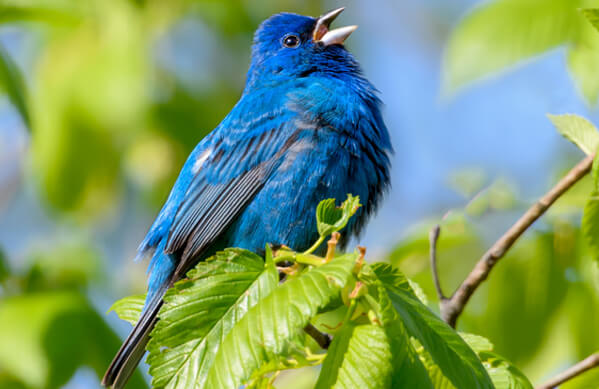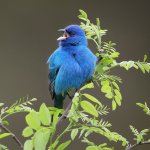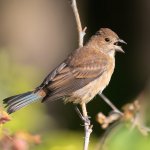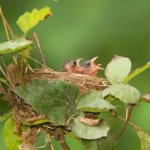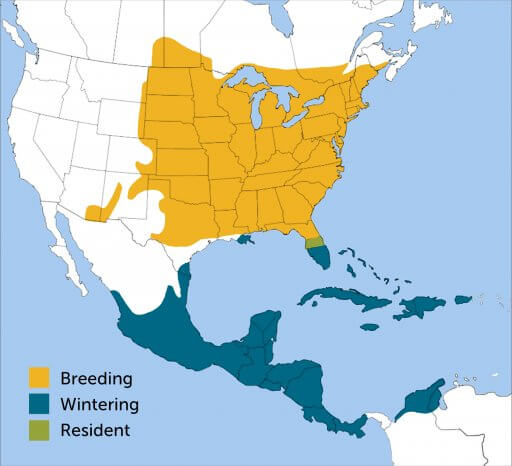
Indigo Bunting range map by ABC
A male Indigo Bunting in breeding plumage is a glorious symphony of shimmering blues, turquoises, and purples. But these beautiful colors are illusory: Like the iridescence of hummingbirds and the blue plumage of other species such as Eastern Bluebird, the male Indigo Bunting owes its glorious appearance to an optical trick — the diffraction of light through its feathers. In poor lighting, the bunting's glorious colors disappear and it becomes a plain, dark-colored finch.
But Indigo Buntings are more than a treat for the eyes — this species also helped reveal some important secrets about how birds migrate.
Following the Stars
Indigo Buntings played a central role in a series of orientation and navigation experiments conducted on migratory birds during the 1960s. Scientists placed caged buntings inside a planetarium, manipulated star patterns, and noted the directions the birds attempted to fly in response. The results proved that Indigo Buntings (and other nocturnal migrants) use the movement of the stars to navigate during migration.
Unfortunately, Indigo Buntings must fly through a gauntlet of threats during their twice-yearly travels. Many fall victim to collisions with windows, wind turbines, and communications towers, or are preyed upon by introduced predators, particularly cats.
Protect buntings and other birds by pledging to keep cats safely contained.
Nonstop Singers
Male Indigo Buntings are persistent singers. Even on the hottest summer days, they can be spotted warbling their sweet, double-noted song from treetops, telephone wires, and other elevated perches. Their sharp "spik" call note is often heard and easy to recognize.
Similar to Song Sparrows, juvenile male Indigo Buntings observe and imitate older males when learning to sing, later developing their own unique phrasings.
Seasonal Switches
Like Black-throated Blue Warbler and Scarlet Tanager, the Indigo Bunting is a sexually dimorphic species. Only males have blue plumage, and then only during their breeding season. Females, juveniles, and males in winter plumage are an unassuming tawny brown.
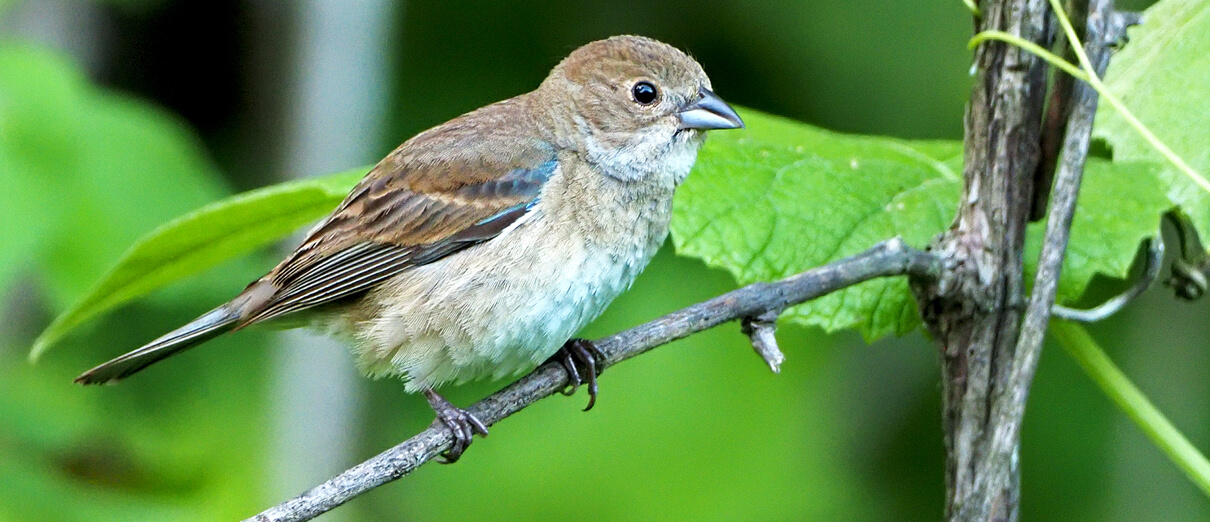
Female Indigo Bunting by Gary Mueller, Macaulay Library at the Cornell Lab of Ornithology
Indigo Buntings, like their close relatives the Painted and Varied Buntings, alter their diet seasonally. They feast on spiders and small insects during the summer, getting the extra protein they need for successful nesting, then eat seeds, buds, and berries during migration and in winter. The buntings can be beneficial to farmers, as they eat many insect pests and weed seeds.
Saving Common and Rare Migrants
Although the Indigo Bunting still appears to be abundant throughout its range, Partners in Flight surveys show population decreases — a scenario increasingly seen in other once-common bird species such as Wood Thrush and Common Yellowthroat. A major culprit is habitat loss on both breeding and wintering grounds.
ABC is working to halt these decreases through its BirdScapes program, which aims to protect habitat for still-common species such as Indigo Bunting, as well as birds at greater risk like Golden-winged Warbler. We address the multiple hazards faced by Indigo Buntings and other migrants through our policy programs, including Bird-safe Windows and Cats Indoors. In addition, ABC's work with forestry partners to promote sustainable working forests directly benefits the Indigo Bunting and many other birds that nest in young forests.
Donate to support ABC's conservation mission!





































